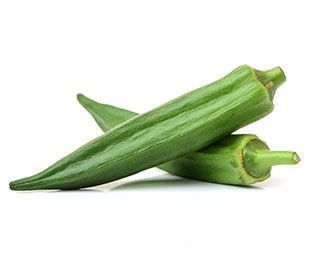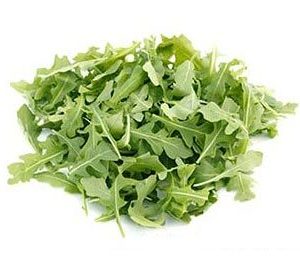Many people fail to appreciate okra because of its slimy texture. However, this vegetable is nutritionally dense, and happens to be loaded with both soluble and insoluble fiber.
Okra comes from the Malvaceae (mallow) family and is related to cotton, hibiscus and hollyhock. This pod vegetable is available all-year round, and thrives well in warm climates. It is usually green with a prickly skin surface (although there are types that are smooth), but you can buy varieties that are purple or red.
There are many ways to cook okra, including steaming, stewing or baking. If you’re looking for something simple, you can just boil it in a pot of water. You can also preserve okra by pickling.
Okra is also called “lady’s fingers” because of its long shape. In other areas, it is known as “gumbo,” which is believed to be derived from the Portuguese word “quingombo,” essentially a corruption of the word “quillobo.” Other names that okra goes by include “gombo” in France, “quibombo” in Spain, “bamies” in eastern Mediterranean and Arab countries, and “bhindi” in India.
Health Benefits of Okra
Okra is high in nutrients but low in calories. A 100-gram serving contains only 33 calories and zero cholesterol. It is high in soluble and insoluble fiber as well, which may be linked to several benefits, such as optimal digestive function, decreased cholesterol levels, reduced cardiovascular disease risk and ideal weight management.
One key nutrient in this green crop is vitamin C. Increasing your intake of vitamin C-rich foods may help support your immune function, inhibit cell damage triggered by oxidative stress and regulate blood pressure levels.
Okra is also good source of B vitamins, such as vitamin B6 (pyridoxine). This B vitamin may help metabolize carbohydrates, aid in the synthesis of fatty and amino acids, promote cognitive development and reduce your risk for insulin resistance. But B6 isn’t the only B vitamin in this vegetable, as okra also contains thiamin (vitamin B1), niacin (vitamin B3) and pantothenic acid (vitamin B5).
Vitamin A can be found in okra, which may provide benefits such as improved vision, healthy skin and mucous membranes, and reduced risk for some types of cancer. Okra is also home to flavonoid antioxidants such as beta-carotene, lutein and zeaxanthin that may assist in reducing your risk for eye disease and enhancing your skin health.
Other vitamins that okra provides include vitamin K and folate. Vitamin K assists in your body’s blood clotting function and, together with vitamin D and calcium, support your bone health. Folate is beneficial for pregnant women as it assists in child development. Iron, calcium, manganese and magnesium are other valuable minerals found in this vegetable.
| Okra Nutrition Facts
Serving Size: 1 cup (100 grams), raw |
||
| Amt. Per Serving |
% Daily Value* |
|
| Calories | 33 | |
| Calories from Fat | ||
| Total Fat | 0.19 g | |
| Saturated Fat | 0.026 g | |
| Trans Fat | ||
| Cholesterol | 0 mg | |
| Sodium | 7 mg | |
| Total Carbohydrates | 7.45 g | |
| Dietary Fiber | 3.2 g | |
| Sugar | 1.48 g | |
| Protein | 1.93 g | |
| Vitamin A36 µg | Vitamin C | 23 mg |
| Calcium82 mg | Iron | 0.62 mg |
Studies on Okra
According to a study in the Jilin Medical Journal, okra showed positive effects in people with nephropathy or kidney disease. Participants were split into two groups and were given either traditional therapy only or traditional therapy with okra for six months. Subjects who belonged to the traditional therapy group with okra had lower levels of urine protein and uric acid, while there were no reported changes in the other group.
Authors of an article published in the Saudi Pharmaceutical Journal highlighted okra’s potential in protecting your body against liver diseases. The extract derived from this vegetable has strong antioxidant capabilities that may help protect against chemically induced liver damage. Okra extract was also discovered to promote hepaprotective and antioxidant abilities similar to that of silymarin.
Okra peel and seed powder were discovered to provide a protective activity against diabetes, as suggested by a Journal of Pharmacy & Bioallied Sciences animal study. Results highlighted that diabetic rats given either okra peel or seed powder exhibited reduced blood glucose levels and nearly normalized lipid profile levels.
Okra Fun Facts
Okra’s roots can be traced back to Ethiopia, although it was said to have grown in Egypt during the 12th century. Eventually, okra spread throughout North Africa and the Middle East, and cultivation in North America started the 18th century. Today, okra is frequently used in Southern cooking. When it’s sliced, a liquid oozes from it, which may be used to thicken sauces.
Okra can be enjoyed in a number of ways. This vegetable may be chopped, then used in stews, sautéed or fried. They may be served with other vegetables or meat (like in this Bamia stew recipe), added to soups (just like in the Caribbean) or fermented. Okra leaves can be used in salads too.
Summary
Despite its viscous juice, okra has gained popularity all over the world. Okra is available all-year round and is a nutritional powerhouse, containing numerous vitamins, minerals and antioxidants.
This vegetable is low in calories and fat, and is a known source of B vitamins, vitamins A, C and K, folate, as well as antioxidants for optimal eye health such as beta-carotene, lutein and zeaxanthin.
Okra also provides minerals such as iron, calcium, manganese and magnesium. It’s a great source of fiber, which contributes to improved digestive health. According to studies, okra may deliver protective properties for your kidneys and liver and help reduce levels of markers linked to diabetes.
Okra can be enjoyed in a variety of ways, but not everyone appreciates its slimy texture and flavor. However, if you love this vegetable and want to incorporate more of it into your dishes, just add it to salads, stews, and of course, gumbo.







Reviews
There are no reviews yet.